Effect of Vibrations, Displacement, Pressure, Temperature and Humidity on the Resistance and Impedance of the Shockproof Resistors Based on Rubber and Jelly (NiPc–CNT–Oil) Composites
Abstract
:1. Introduction
2. Results and Discussion
3. Conclusions
4. Experimental Section
Author Contributions
Funding
Institutional Review Board Statement
Informed Consent Statement
Acknowledgments
Conflicts of Interest
References
- Ionescu, C.; Svasta, P.; Vasile, A.; Bonfert, D. Investigations on organic printed resistors based on PEDOT: PSS. In Proceedings of the 2012 IEEE 18th International Symposium for Design and Technology in Electronic Packaging (SIITME), Alba Iulia, Romania, 25–28 October 2012; pp. 85–89. [Google Scholar]
- Maktabi, S.; Chiarot, P.R. Electrohydrodynamic printing of organic polymeric resistors on flat and uneven surfaces. J. Appl. Phys. 2016, 120, 084903. [Google Scholar] [CrossRef]
- Wang, R.; Chen, S.; Feng, L.; Li, Q.; Hu, W.; Liu, W.; Guo, X. Stable fully-printed polymer resistive read-only memory and its operation in mobile readout system. Org. Electron. 2015, 27, 259–265. [Google Scholar]
- Cao, M.; Jochem, K.; Hyun, W.J.; Francis, L.F.; Frisbie, C.D. Self-aligned inkjet printing of resistors and low-pass resistor–capacitor filters on roll-to-roll imprinted plastics with resistances ranging from 10 to 106 Ω. Flex. Print. Electron. 2018, 3, 045003. [Google Scholar] [CrossRef]
- Leon, P. Carbon-Composition Resistor. U.S. Patent US2347795A, 2 May 1944. [Google Scholar]
- Stankavich, A.J. Process of Producing an Electrical Resistor. U.S. Patent US3619287A, 9 November 1971. [Google Scholar]
- Nair, K.M. Resistor Compositions. U.S. Patent US4657699A, 14 April 1987. [Google Scholar]
- Chadwick, G.F. Polytetrafluoroethylene Lubricant for Carbon Composition Resistors. U.S. Patent US3553135, 5 January 1971. [Google Scholar]
- Melvin, T. Molded Resistors. U.S. Patent US2744988, 8 May 1956. [Google Scholar]
- Kobayashi, N.; Sakai, H. Organic Positive Characteristics Resistor. JPH02140902A, 30 May 1990. [Google Scholar]
- Asada, E.; Yamazoe, M.; Matsumura, S. Resistor Composition. U.S. Patent US4986933, 22 January 1991. [Google Scholar]
- Mcknight, G.P. Resistors and Method of Manufacture. U.S. Patent US3013240A, 12 December 1961. [Google Scholar]
- Fujimura, K. Method of Manufacturing Resistor Paste. U.S. Patent US4175061A, 20 November 1979. [Google Scholar]
- Dorfman, J.R. Polymer Thick Film Resistor Compositions. U.S. Patent US5470643A, 28 November 1995. [Google Scholar]
- Vernooy, P.D.; Walker, A.T.; Hang, K.W. Non-Lead Resistor Composition. U.S. Patent US7951311B2, 31 May 2011. [Google Scholar]
- MChani, T.S.; Karimov, K.S.; Asiri, A.M. Carbon nanotubes and graphene powder based multifunctional pressure, displacement and gradient of temperature sensors. Semiconductors 2020, 54, 85–90. [Google Scholar]
- Chani, M.T.S.; Karimov, K.S.; Meng, H.; Akhmedov, K.M.; Murtaza, I.; Asghar, U.; Abbass, S.Z.; Ali, R.; Asiri, A.M.; Nawaz, N. Humidity sensor based on orange dye and graphene solid electrolyte cells. Russ. J. Electrochem. 2019, 55, 1391–1396. [Google Scholar] [CrossRef]
- Chani, M.T.S.; Karimov, K.S.; Khan, S.B.; Fatima, N.; Asiri, A.M. Impedimetric humidity and temperature sensing properties of chitosan-CuMn2O4 spinel nanocomposite. Ceram. Int. 2019, 45, 10565–10571. [Google Scholar] [CrossRef]
- Chani, M.T.S. Impedimetric sensing of temperature and humidity by using organic-inorganic nanocomposites composed of chitosan and a CuO-Fe3O4 nanopowder. Microchim. Acta 2017, 184, 2349–2356. [Google Scholar] [CrossRef]
- Chani, M.T.S. Fabrication and characterization of chitosan-CeO2-CdO nanocomposite based impedimetric humidity sensors. Int. J. Biol. Macromol. 2022, 194, 377–383. [Google Scholar] [CrossRef]
- Chani, M.T.S.; Karimov, K.S.; Asiri, A.M. Impedimetric humidity and temperature sensing properties of the graphene–carbon nanotubes–silicone adhesive nanocomposite. J. Mater. Sci. Mater. Electron. 2019, 30, 6419–6429. [Google Scholar] [CrossRef]
- Chani, M.T.S.; Karimov, K.S.; Bukhsh, E.M.; Asiri, A.M. Fabrication and Investigation of Graphene-Rubber Nanocomposite Based Multifunctional Flexible Sensors. Int. J. Electrochem. Sci 2020, 15, 5076–5088. [Google Scholar] [CrossRef]
- Chani, M.T.S.; Karimov, K.S.; Khalid, F.; Abbas, S.; Bhatty, M. Orange dye—polyaniline composite based impedance humidity sensors. Chin. Phys. B 2013, 22, 010701. [Google Scholar] [CrossRef]
- Chani, M.T.S.; Karimov, K.S.; Marwani, H.M.; Muhammad, H.; Zeeshan, M.M.; Asiri, A.M. Impedimetric multifunctional Sensor Based on Rubber-CNTs-orange Dye Nanocomposite Fabricated by Rubbing-in Technology. Int. J. Electrochem. Sci. 2021, 16, 7. [Google Scholar]
- Chani, M.T.S.; Karimov, K.S.; Marwani, H.M.; Rahman, M.M.; Asiri, A.M. Electric properties of flexible rubber-based CNT/CNT-OD/Al cells fabricated by rubbing-in technology. Appl. Phys. A 2021, 127, 1–8. [Google Scholar] [CrossRef]
- Chani, M.T.S.; Khan, S.B.; Karimov, K.S.; Abid, M.; Asiri, A.M.; Akhtar, K. Synthesis of metal oxide composite nanosheets and their pressure sensing properties. J. Semicond. 2015, 36, 023002. [Google Scholar] [CrossRef]
- Chani, M.T.S.; Karimov, K.S.; Nabi, J.-u.; Hashim, M.; Kiran, I.; Asiri, A.M. Design, fabrication and investigation of semitransparent thermoelectric cells based on graphene. Int. J. Electrochem. Sci 2018, 13, 11777–11786. [Google Scholar] [CrossRef]
- Chani, M.T.S.; Khan, S.B.; Asiri, A.M.; Karimov, K.S.; Rub, M.A. Photo-thermoelectric cells based on pristine α-Al2O3 co-doped CdO, CNTs and their single and bi-layer composites with silicone adhesive. J. Taiwan Inst. Chem. Eng. 2015, 52, 93–99. [Google Scholar] [CrossRef]
- Karimov, K.; Saleem, M.; Ahmed, N.; Tahir, M.; Zahid, M.; Sajid, M.; Bashir, M. Effect of humidity on the NiPc based organic photo field effect transistor. Proc. Rom. Acad. Ser. A Math. Phys. 2016, 17, 84–89. [Google Scholar]
- El-Nahass, M.; Abd-El-Rahman, K.; Farag, A.; Darwish, A. Structural and transport properties of thermally evaporated nickel phthalocyanine thin films. Phys. Scr. 2005, 73, 40. [Google Scholar] [CrossRef]
- Wang, X.; Wu, W.; Ju, H.; Zou, T.; Qiao, Z.; Gong, H.; Wang, H. Experimental and theoretical studies of the structure and optical properties of nickel phthalocyanine nanowires. Mater. Res. Express 2016, 3, 125002. [Google Scholar] [CrossRef]
- Ejidike, I.P.; Dikio, C.W.; Wankasi, D.; Dikio, E.D.; Mtunzi, F.M. Sorption of Pb2+ from aqueous solution using polyethylene and polyvinylchloride wastes as adsorbents: A comparative study. Int. J. Environ. Stud. 2018, 75, 932–949. [Google Scholar] [CrossRef]
- Soleimani, H.; Yahya, N.; Baig, M.; Khodapanah, L.; Sabet, M.; Burda, M.; Oechsner, A.; Awang, M. Synthesis of carbon nanotubes for oil-water interfacial tension reduction. Oil Gas Res. 2015, 1, 1000104. [Google Scholar]
- Tang, Q.; Li, B.; Ma, W.; Gao, H.; Zhou, H.; Yang, C.; Gao, Y.; Wang, D. Fabrication of a double-layer membrane cathode based on modified carbon nanotubes for the sequential electro-Fenton oxidation of p-nitrophenol. Environ. Sci. Pollut. Res. 2020, 27, 18773–18783. [Google Scholar] [CrossRef] [PubMed]
- Mou, K.; Chen, Z.; Zhang, X.; Jiao, M.; Zhang, X.; Ge, X.; Zhang, W.; Liu, L. Highly Efficient Electroreduction of CO2 on Nickel Single-Atom Catalysts: Atom Trapping and Nitrogen Anchoring. Small 2019, 15, 1903668. [Google Scholar] [CrossRef] [PubMed]
- Chen, Z.; Lu, C. Humidity sensors: A review of materials and mechanisms. Sens. Lett. 2005, 3, 274–295. [Google Scholar] [CrossRef] [Green Version]
- Farahani, H.; Wagiran, R.; Hamidon, M.N. Humidity sensors principle, mechanism, and fabrication technologies: A comprehensive review. Sensors 2014, 14, 7881–7939. [Google Scholar] [CrossRef] [PubMed] [Green Version]
- Urano, K. Resistive Composition, Resistor Using the Same, and Making Method Thereof. U.S. Patent US20040061096, 30 August 2005. [Google Scholar]
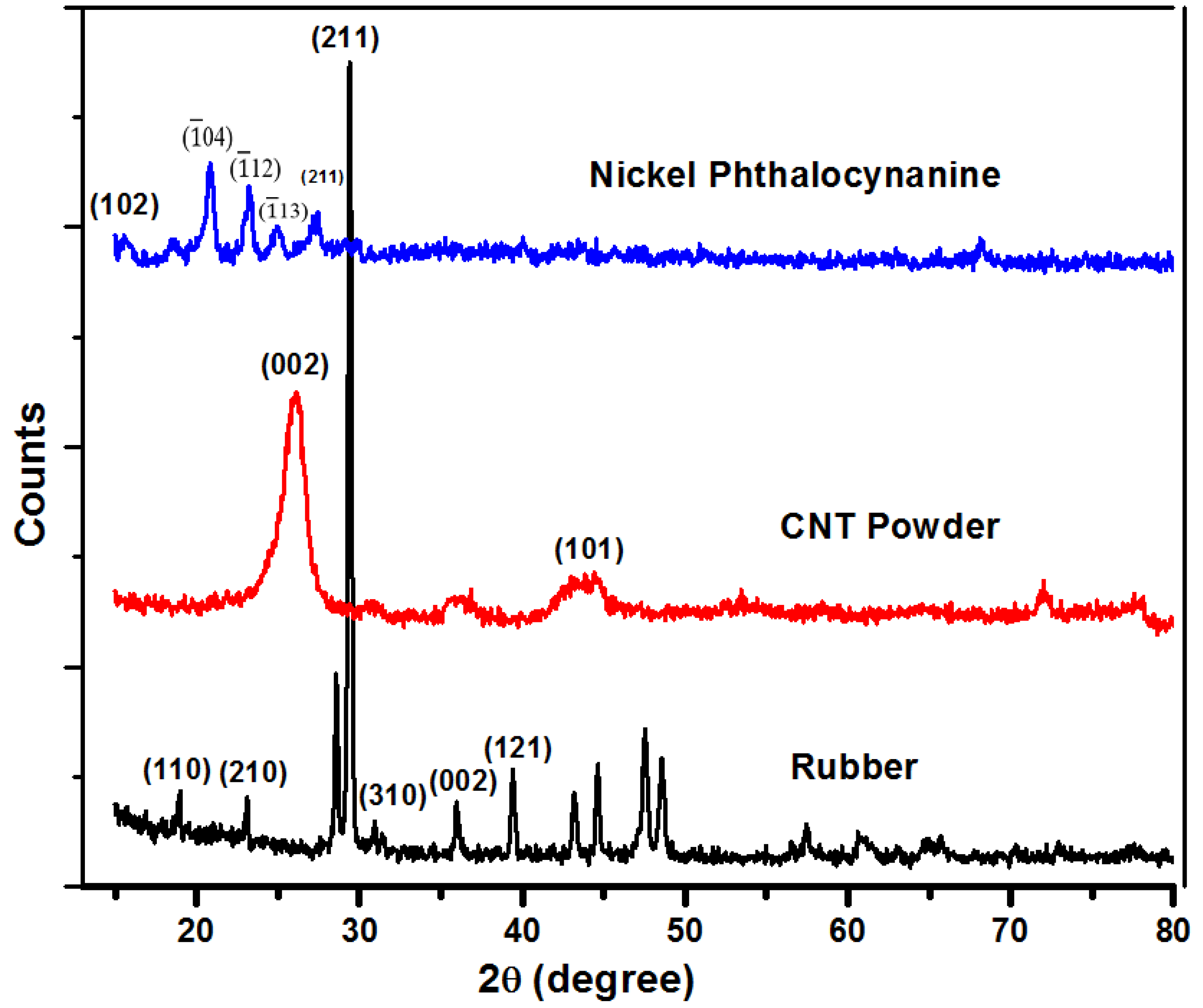
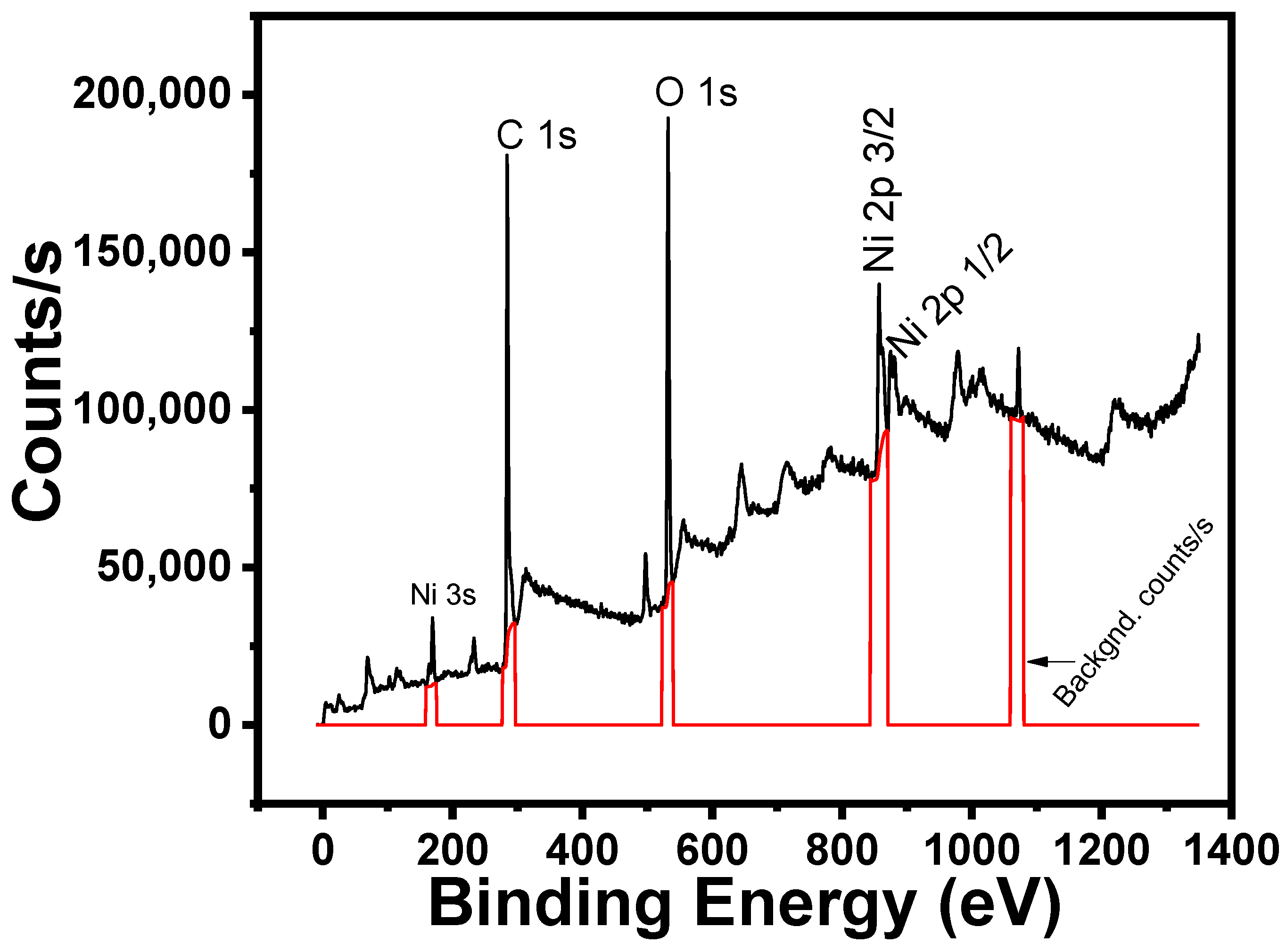
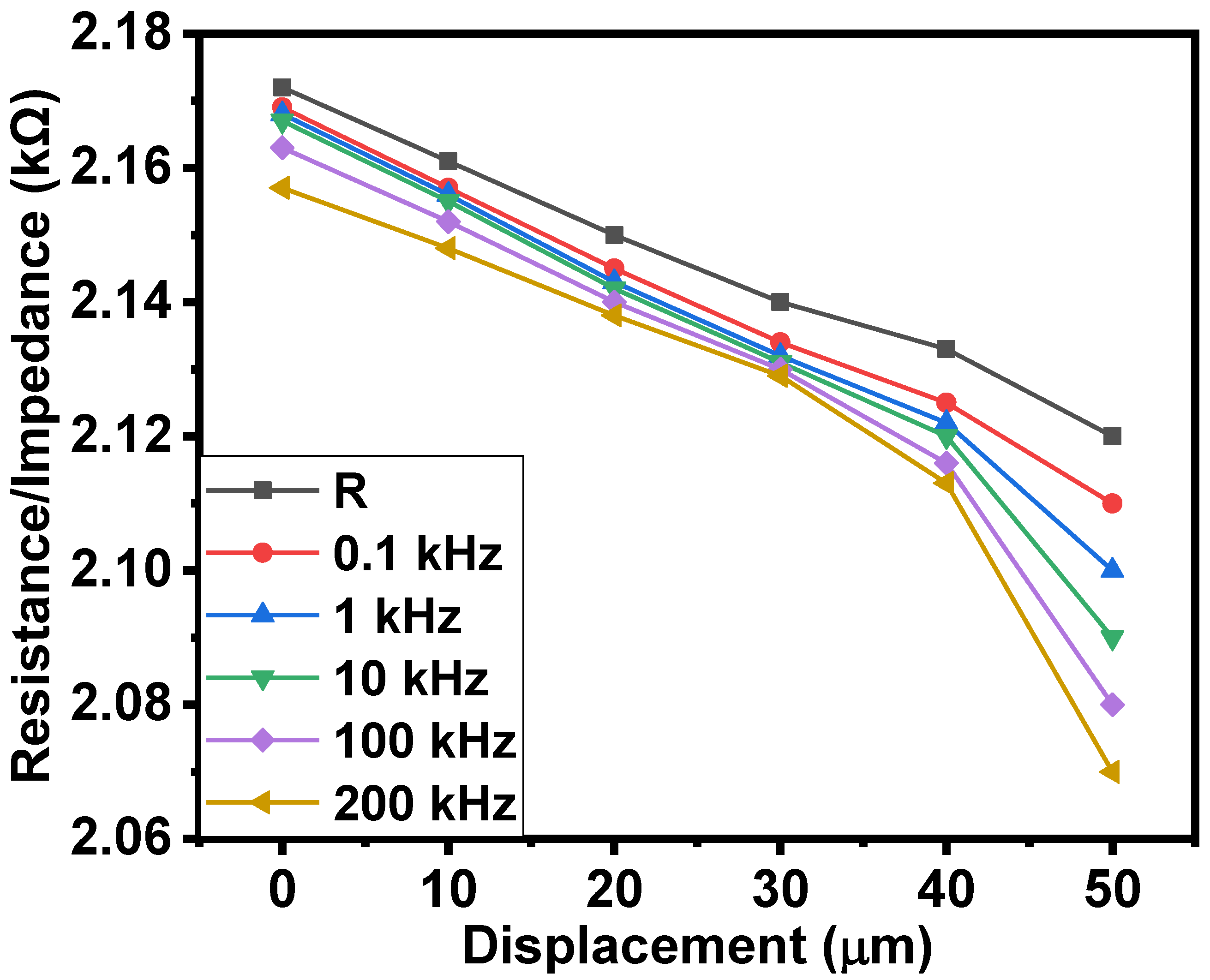
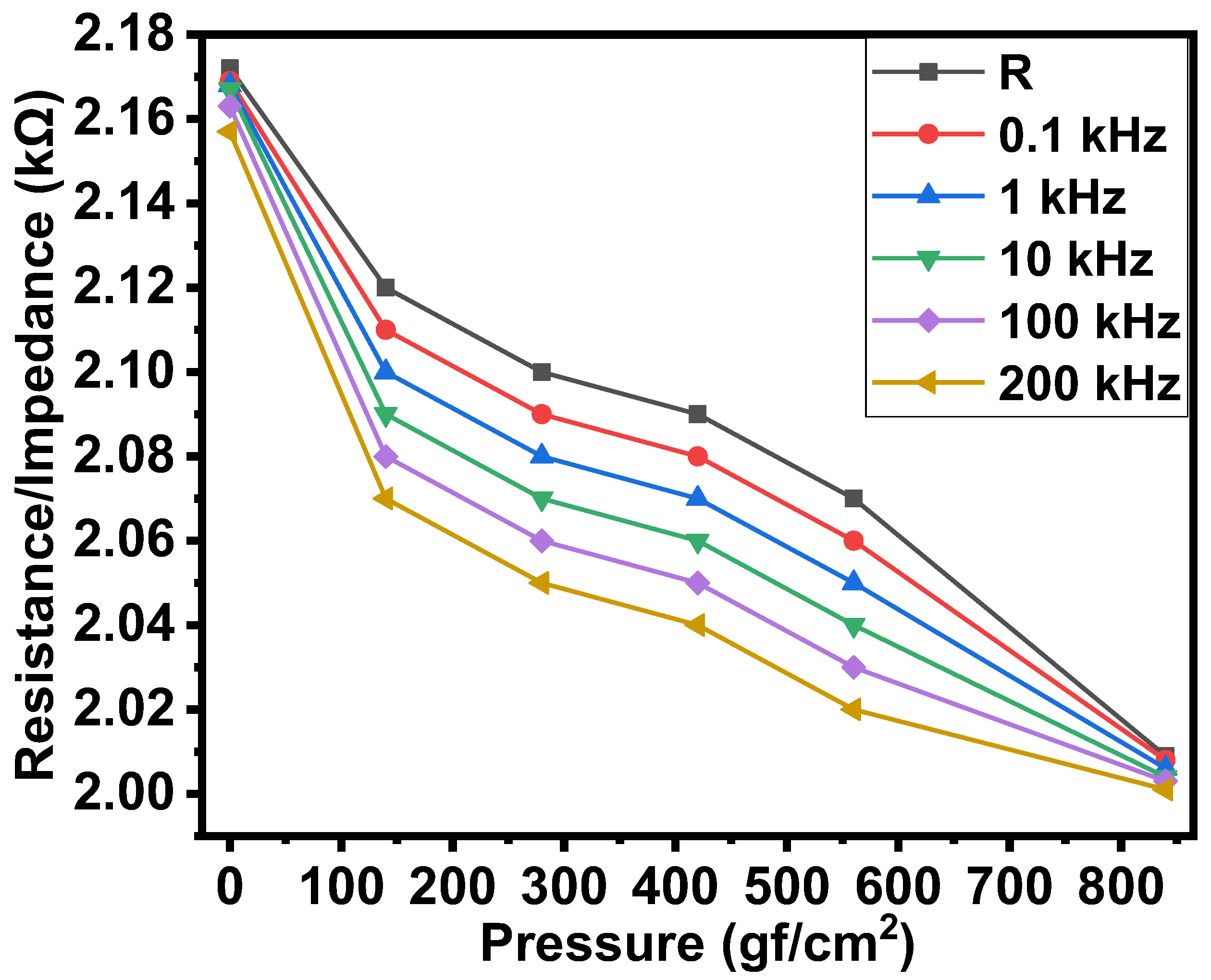
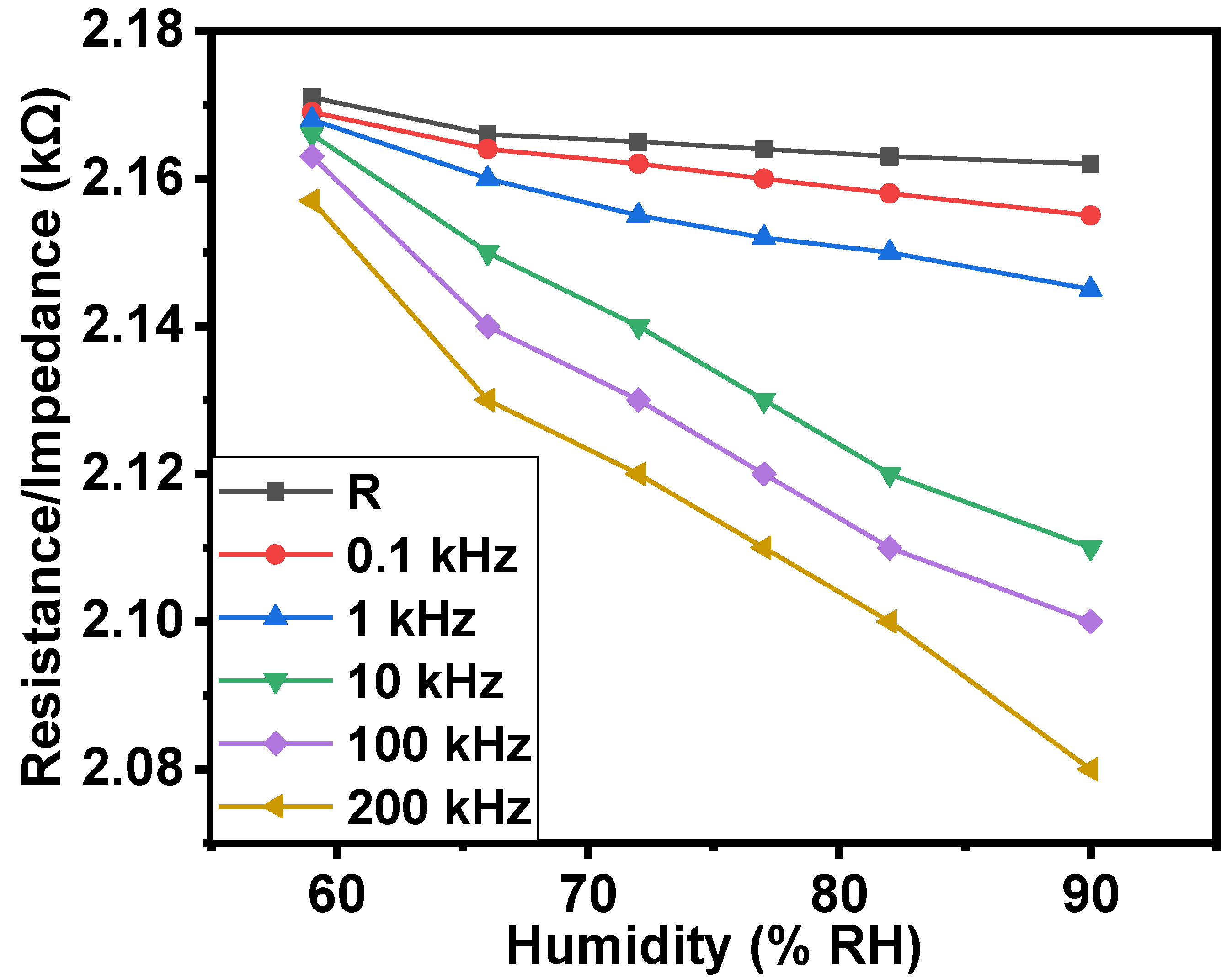


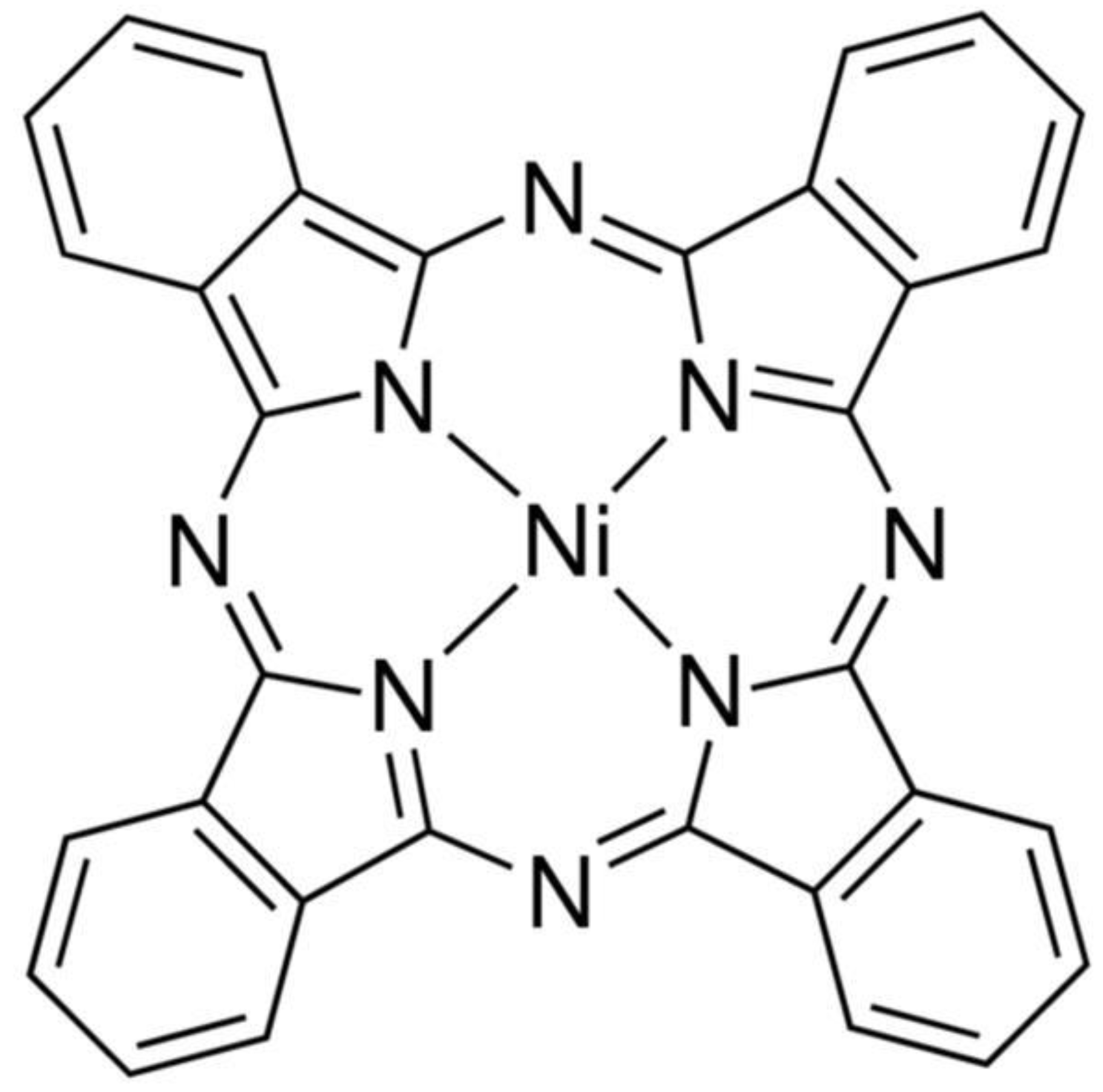

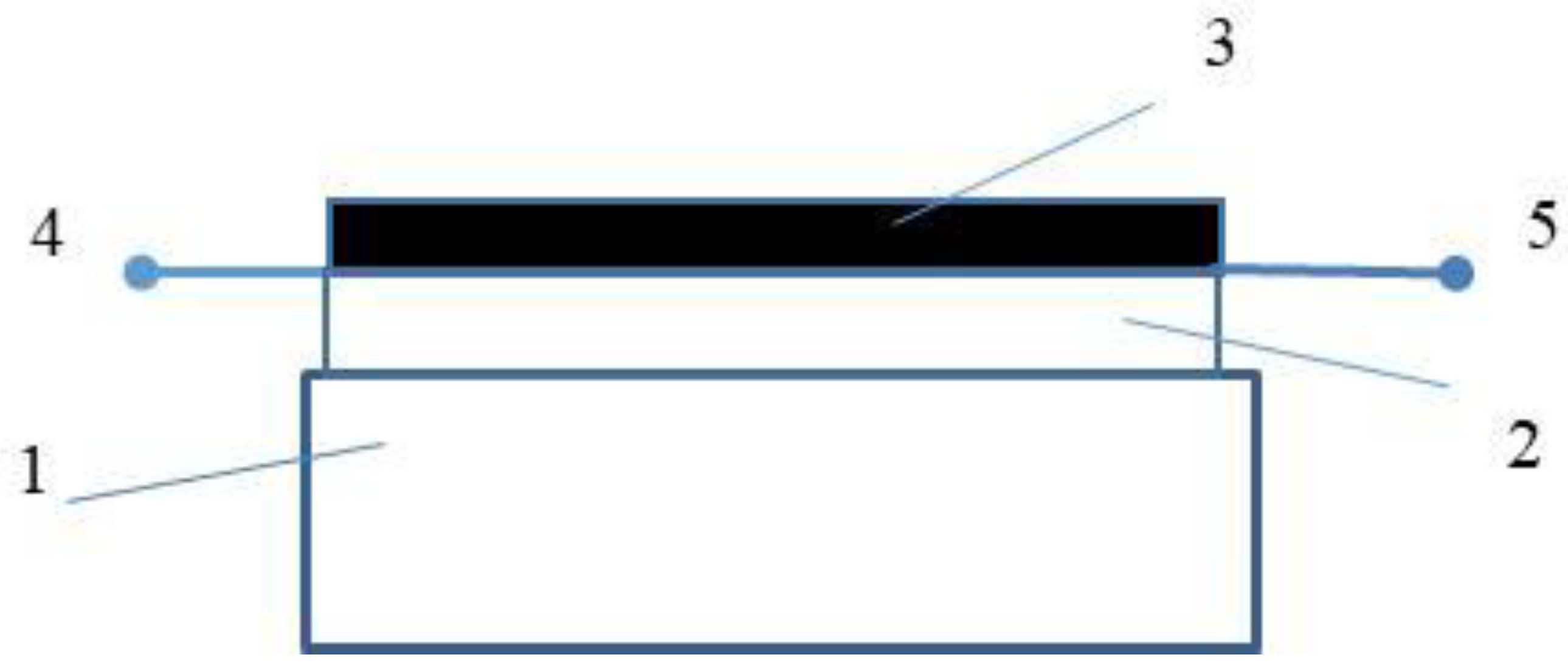
| Parameter | Range | ∆R (Times) | ∆Z at 100 Hz (Times) | ∆Z at 1 kHz (Times) | ∆Z at 10 kHz (Times) | ∆Z at 100 kHz (Times) | ∆Z at 200 kHz (Times) |
|---|---|---|---|---|---|---|---|
| Displacement | 0–50 μm | −1.025 | −1.028 | −1.032 | −1.037 | −1.039 | −1.040 |
| Pressure | 0–850 gf/cm2 | −1.081 | −1.080 | −1.080 | −1.081 | −1.080 | −1.078 |
| Humidity | 60–90%RH | −1.004 | −1.006 | −1.01 | −1.03 | −1.03 | −1.04 |
| Temperature | 25–43 °C | −1.042 | −1.042 | −1.048 | −1.048 | −1.048 | −1.048 |
| Vibration | 0–10 min | −1.037 | −1.038 | −1.038 | −1.038 | −1.038 | −1.038 |
Publisher’s Note: MDPI stays neutral with regard to jurisdictional claims in published maps and institutional affiliations. |
© 2022 by the authors. Licensee MDPI, Basel, Switzerland. This article is an open access article distributed under the terms and conditions of the Creative Commons Attribution (CC BY) license (https://creativecommons.org/licenses/by/4.0/).
Share and Cite
Chani, M.T.S.; Karimov, K.S.; Asiri, A.M.; Rahman, M.M.; Kamal, T. Effect of Vibrations, Displacement, Pressure, Temperature and Humidity on the Resistance and Impedance of the Shockproof Resistors Based on Rubber and Jelly (NiPc–CNT–Oil) Composites. Gels 2022, 8, 226. https://doi.org/10.3390/gels8040226
Chani MTS, Karimov KS, Asiri AM, Rahman MM, Kamal T. Effect of Vibrations, Displacement, Pressure, Temperature and Humidity on the Resistance and Impedance of the Shockproof Resistors Based on Rubber and Jelly (NiPc–CNT–Oil) Composites. Gels. 2022; 8(4):226. https://doi.org/10.3390/gels8040226
Chicago/Turabian StyleChani, Muhammad Tariq Saeed, Khasan S. Karimov, Abdullah M. Asiri, Mohammed M. Rahman, and Tahseen Kamal. 2022. "Effect of Vibrations, Displacement, Pressure, Temperature and Humidity on the Resistance and Impedance of the Shockproof Resistors Based on Rubber and Jelly (NiPc–CNT–Oil) Composites" Gels 8, no. 4: 226. https://doi.org/10.3390/gels8040226
APA StyleChani, M. T. S., Karimov, K. S., Asiri, A. M., Rahman, M. M., & Kamal, T. (2022). Effect of Vibrations, Displacement, Pressure, Temperature and Humidity on the Resistance and Impedance of the Shockproof Resistors Based on Rubber and Jelly (NiPc–CNT–Oil) Composites. Gels, 8(4), 226. https://doi.org/10.3390/gels8040226








